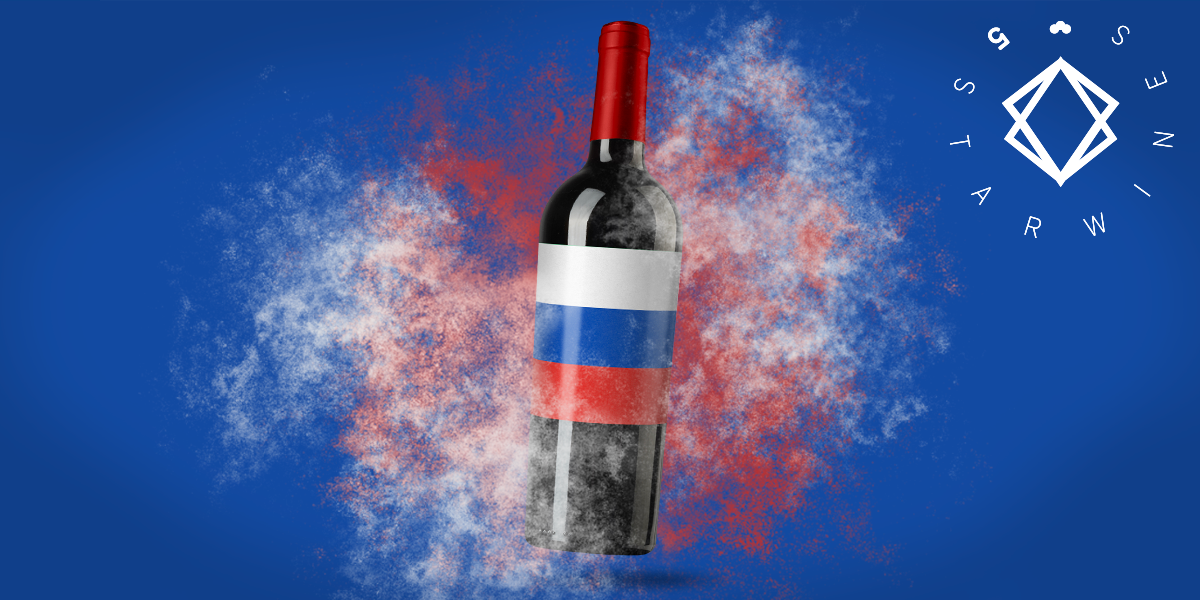After the political crisis of 2014, the Russian market underwent considerable transformation and the repercussions endure to this day. The collapse of the Russian Ruble and the embargo on products from certain countries made things difficult, however, these were not unhappy consequences for everyone: Italian wine producers saw benefits to hard times, then and now.
In Russia, it is tradition for empty bottles to be placed on the floor. It is said this custom date’s back to the time of the Napoleonic wars. After the Battle of Paris in 1814, the Russian Cossacks realized that taverns calculated their bar tab by the number of bottles left on the table. After making this discovery, it became clear that hiding bottles lessened their evening’s expenses. Tradition aside, in this article we want to focus instead on what these bottles contained when full, and when they are found on Russian tables.
The Russians’ favorite drink? No, it’s not the vodka
Stereotypes teach us that Russian drinking culture is entirely based on vodka. Even though vodka has been a cultural pillar of society for many years– this statement is no longer entirely accurate in terms of sales and consumption. We recommend that you put away those shot glasses and take out a nice mug, because beer is the drink of choice in Russia!
Already by 2017, beer accounted for 83% of national alcohol sales and consumption. The 2018 Football World Championship also improved the status of this drink. The FIFA World Cup had a huge impact on sales performance in the Russian market in general, and there was an overall 5% increase in beer consumption: it is thought that thousands of foreign tourists accustomed to enjoying a glass of beer during matches influenced their hosts, transferring this beloved custom to Russian fans (see Russia’s alcohol market is among the largest in the world – and full of opportunities for international exporters, World Food Moscow). As a result, imports of this drink have skyrocketed. Beer producers are not the only ones seeing increased sales. It seems the Russian Federation is as thirsty for beer as it is for wine. The Russian wine market is lucrative for wineries, but it is still an arduous endeavour.
The panorama is a little bleak
Due to the Russian-Ukrainian conflict, the Ruble collapsed in 2014, creating complications that still exist today. In 2013 the Russians could afford to pay for bottles of Chianti that had been marked up by 300%, only two years later many wine bars in the country found themselves having to offer their customers wines with a different price/quality ratio. In the same period, the demand for wines by the glass had increased and restaurants and bars had to start establishing business relationships directly with producers (see Russian wine lovers are flexing their wine palates, Meininger’s Wine Business International). It is estimated that, in the coming years, the rising inflation rate and the expected increase in VAT will further contribute to the worsening situation, limiting the population’s purchasing power.
Advice from an insider
How can we counteract this rather negative landscape? How does one go about exporting wine to Russia? We asked Nikolay Chashchinov, Director of the Millesime Wine School in St. Petersburg:
«I think Italian producers are in a privileged position over others. We Russians have an unbridled passion for Italian wines and this can only be a huge advantage for your country.What should an Italian wine producer do? First of all, it is essential that his wines have been published in some of the most relevant publications and guides on the market: WineSpectator, Wine Advocate, 5StarWines or Gambero Rosso. A decisive step is the organization of Incoming programs, aimed not only at importers: given the growing decisive role of restaurateurs, this type of activity should also be directed to these professionals. Small producers have to focus on restaurants: the market is changing and the role of large importers is coming to a halt, leaving room for buyers in large retail chains»
In conclusion…
Chashchinov is not wrong: Italian producers are indeed very much at an advantage over others. Firstly, because, there is no embargo on alcohol from Europe. Secondly, because when it comes to wine, Italy is already the reference country in Russia. Compared to producers in other countries, it is much easier for an Italian winery to establish contact with Russian consumers and entrepreneurs. This can also be achieved through events such as Vinitaly Russia, organised by Vinitaly International. Nikolay’s advice was sound, registering your cellar in one of the guides recommended is a very good idea and our (totally impartial) suggestion here would be to register for 5StarWines.
Our BRICS countries’ series is currently on its second article…
The next one will be about India: do you want to make sure you don’t miss it?
Then leave your e-mail address here.
[yikes-mailchimp form=”2″]

